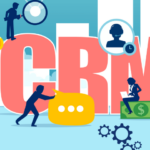In the last decade or so, the market for CRM software has experienced a boom. But you can’t blame people for the slow adoption rate, they don’t like what they don’t understand, do they? CRM software has been around for more than a decade now, and as the below stats shows, it is here to stay.
- Create workflows to save you time.
The best CRM systems support your marketing and sales efforts as well as all internal customer-related processes-also known as your workflows. In other words, CRMs support your complex and constantly changing workflows by automating, completing, and organizing specific tasks. CRM systems keep your team on task and in sync by facilitating more effective use of time and eliminating many tedious tasks.
The Steel Buildings contractors CRM Software can automate your marketing as well as sales and emailing efforts to streamline your processes across all teams. You can choose to create contact-based workflows as well as lead workflows and company nurturing, deal, quote, or workflows based on tickets.
And speaking of saving yourself valuable time, CRMs can automate your other day-to-day tasks, in tandem with your workflows.
- Automate your day-to-day tasks.
CRMs automate other day-to-day tasks, speeding up your sales, service, and marketing team members’ often time-consuming work. Commonly automated tasks within CRMs include entering data, setting up personal email sequences, logging all customer interactions, and automating customer service tasks (such as logging and tracking support chatbot interactions and conversations with site visitors and customers). This type of automation allows reps to pick up where they left off with their contacts, and to manage their relationships with all leads and customers easily.
For example, with CRM Runner, all of your contacts are automatically brought into the system, populated with relevant data and activity information accordingly, and enriched with information from more than 20 million businesses. Contacts are then visible in an easy-to-view timeline. Finally, the built-in reporting features of the CRM automatically provide insight into the metrics relating to those contacts that your team tracks.
Speaking of this data, let’s take a closer look at how CRM Software for Steel Buildings contractors make reporting and data analysis simple.
- Report on and analyze your processes.
CRMs simplify reporting and analysis of your processes and the pipeline. Within a CRM, the reporting features provide an inside look into your sales and marketing processes so that all teams can better optimize your efforts. This type of analysis allows you to create remarkable and memorable experiences for your leads and customers.
Within a CRM, customizable dashboards are reported so that you can report any metrics (such as sales performance, productivity, closed-to-goal deals, etc.) across your sales, marketing, or service organs. You can pull these detailed reports at any point in time and share them directly with the team members who need to review them.
Introducing CRM software into the mix will help you understand what is lacking in the business process and what can be done to fix it. CRM software is the sales tool that has helped Steel Buildings contractors fix their business process errors.






7 Comments